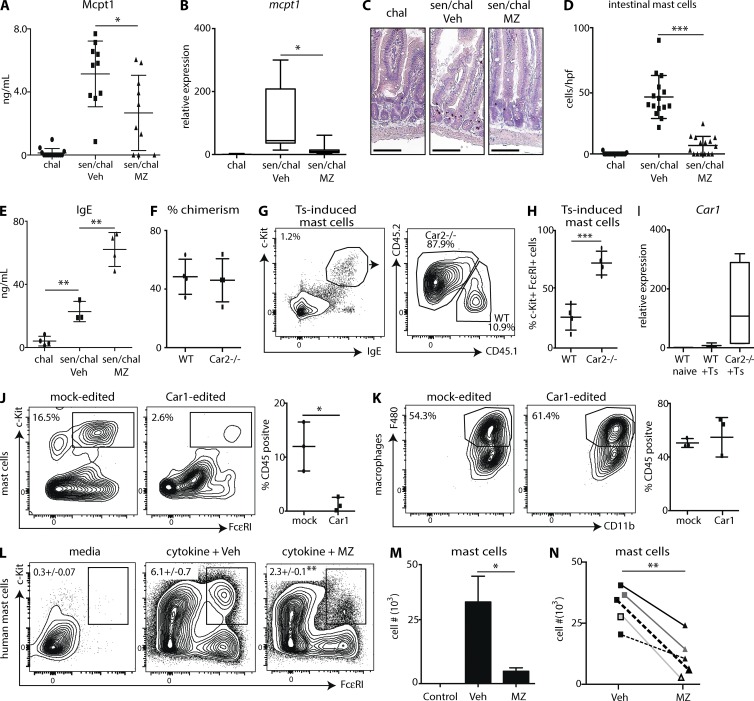Figure 4.
Car enzymes regulate human mast cell development. OVA challenged (chal) or sensitized and challenge (sen/chal) mice were treated with Veh or MZ. Serum Mcpt1 (A), intestinal expression of mcpt1 (B), intestinal mast cell populations in histological sections (C and D), and serum IgE levels (E) were evaluated. hpf, high-power field. Bars, 100 µm. (F) Mice were reconstituted with WT and Car2−/− BM (50/50), and the percent chimerism was determined. (G and H) Chimeric mice were infected with T. spiralis (Ts), and mLN mast cells were evaluated. (I) Mice reconstituted with 100% WT or 100% Car2−/− BM were infected with T. spiralis, and intestinal expression of Car1 was determined. (J and K) Mock-edited or Car1-edited stem cells were cultured under mast cell (J)– or macrophage (K)-promoting conditions. (L and M) Human CD34+ cells were cultured with mast cell–promoting cytokines in the presence of Veh or MZ. Representative analysis is from one donor. Error bars represent SD. (N) Pooled mast cell numbers from five individual donors. (A and B) Results are illustrated as the combined datasets of three independent experiments. (C–E) Results are representative of three independent experiments of at least two mice per challenged group and at least three mice per sensitized and challenged group. (F and H) Results are representative of two independent experiments of nine biological replicates total. (I) Results are representative of 2 independent experiments of 10 biological replicates total. (J and K) Results are representative of three independent experiments with at least three technical replicates per experiment. (L and M) Results illustrate three technical replicates from one human donor. (N) Data points represent individual human donors. n = 5. Numbers in cytometry plots represent the percentage of cells gated. Statistical analysis was performed using a Student’s t test. *, P < 0.05; **, P < 0.01; ***, P < 0.001.

